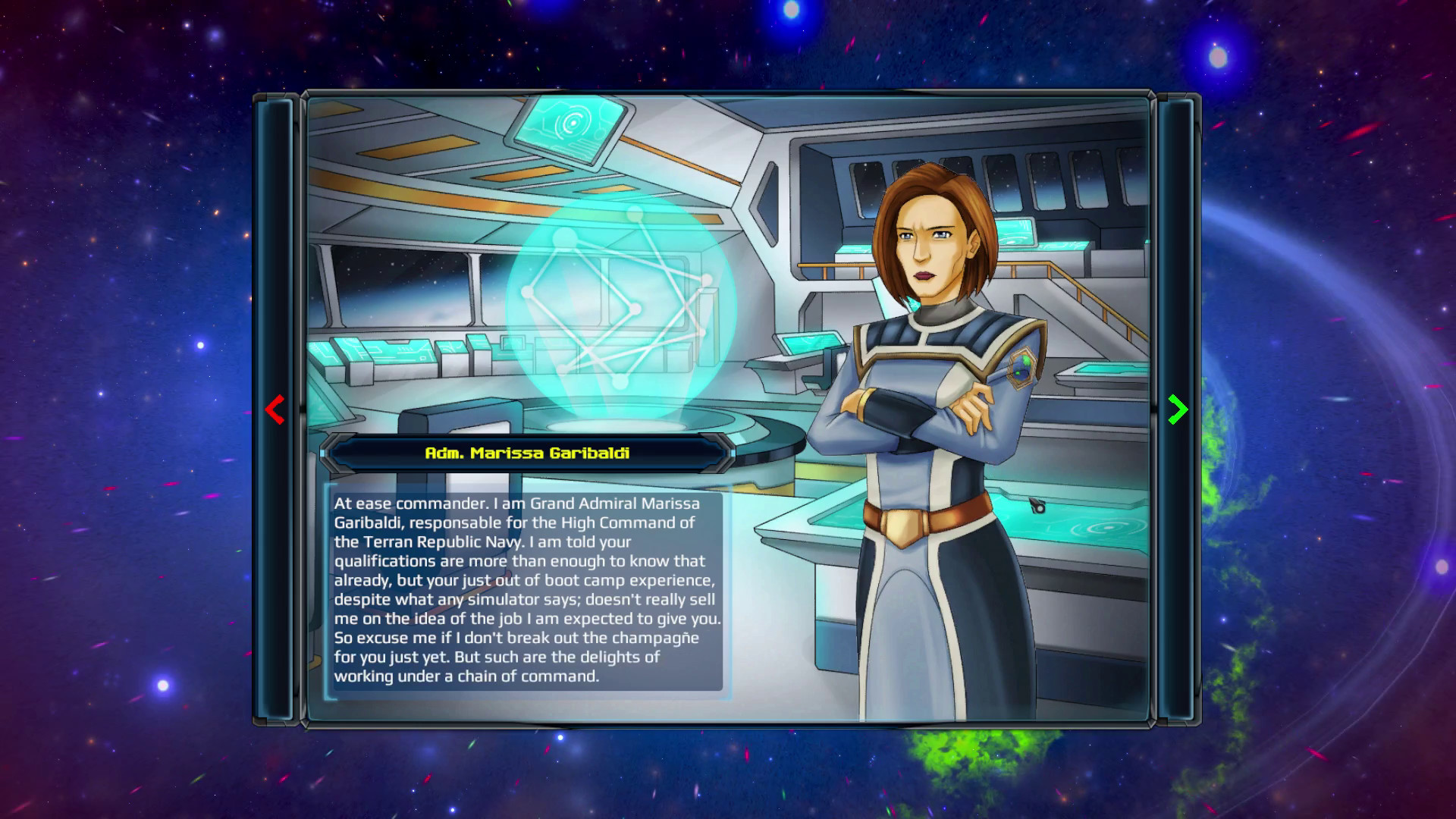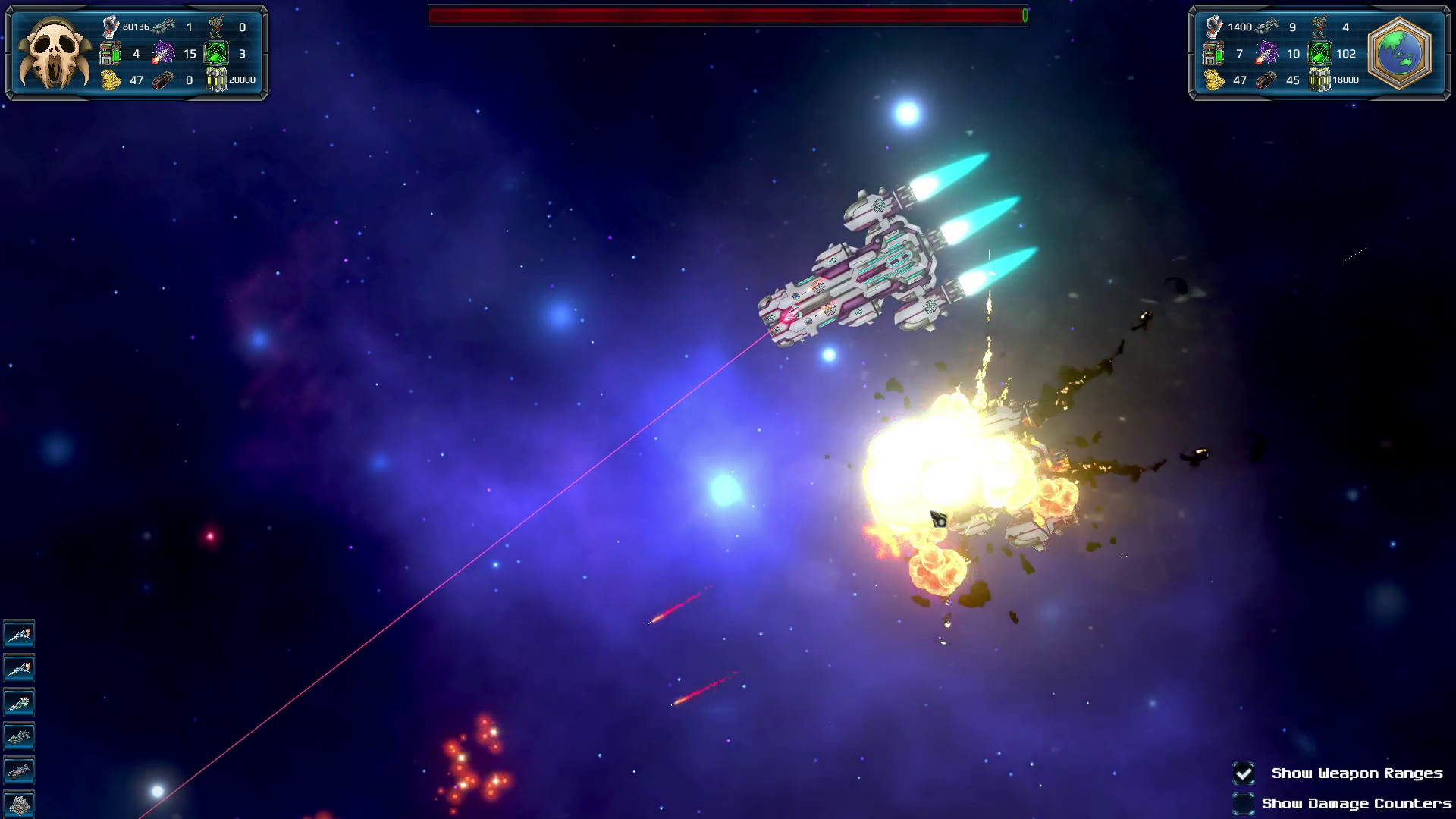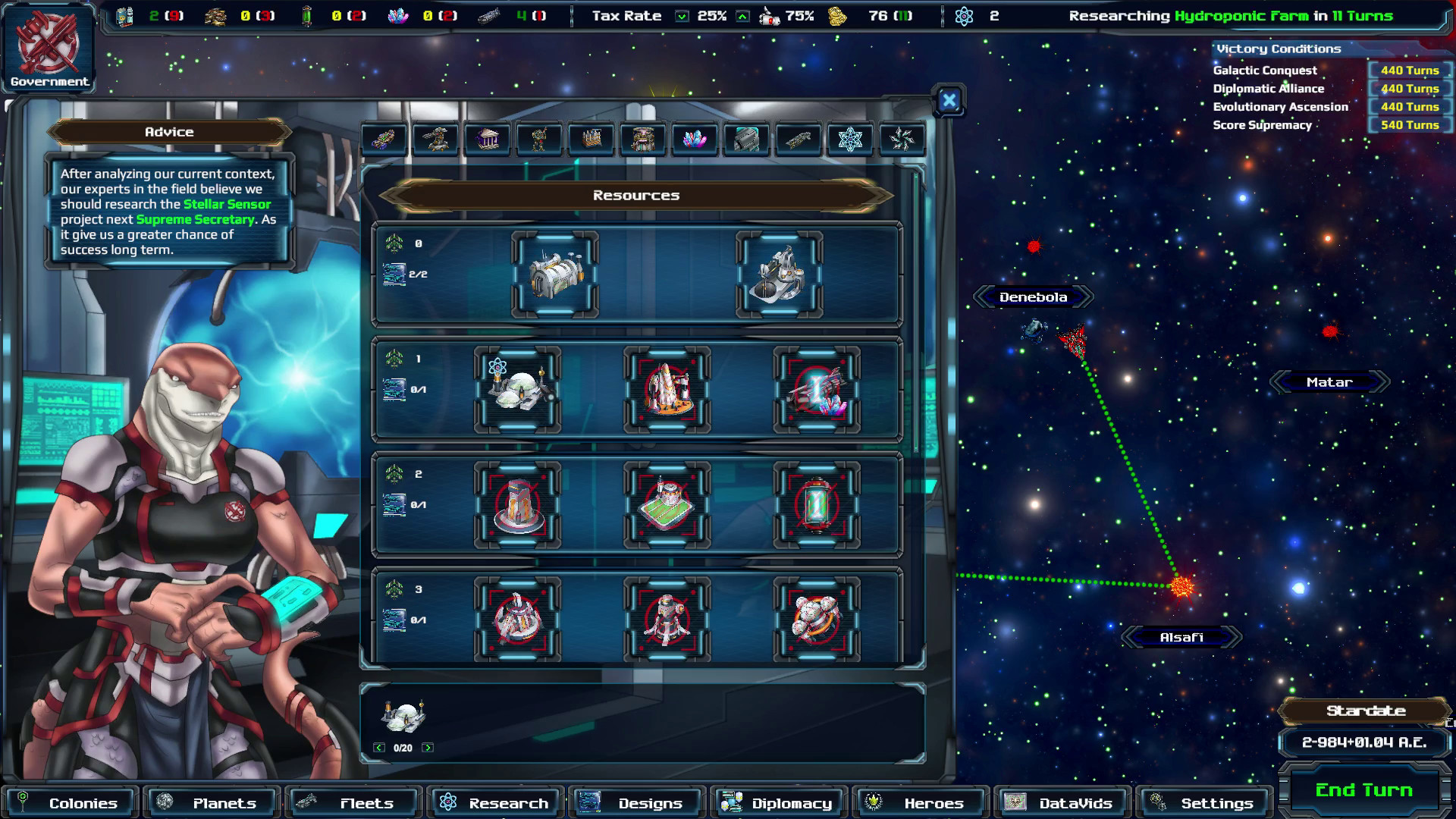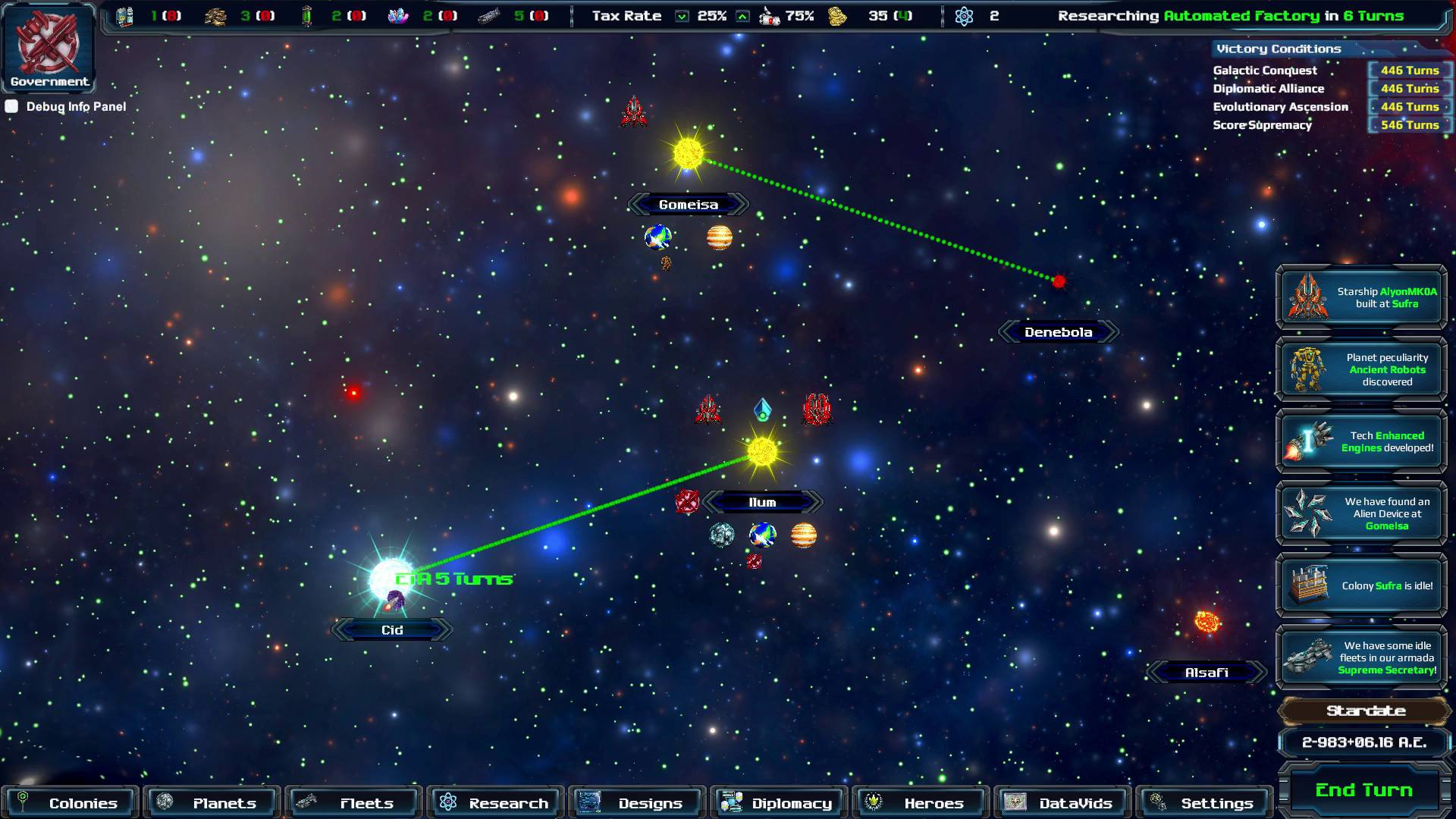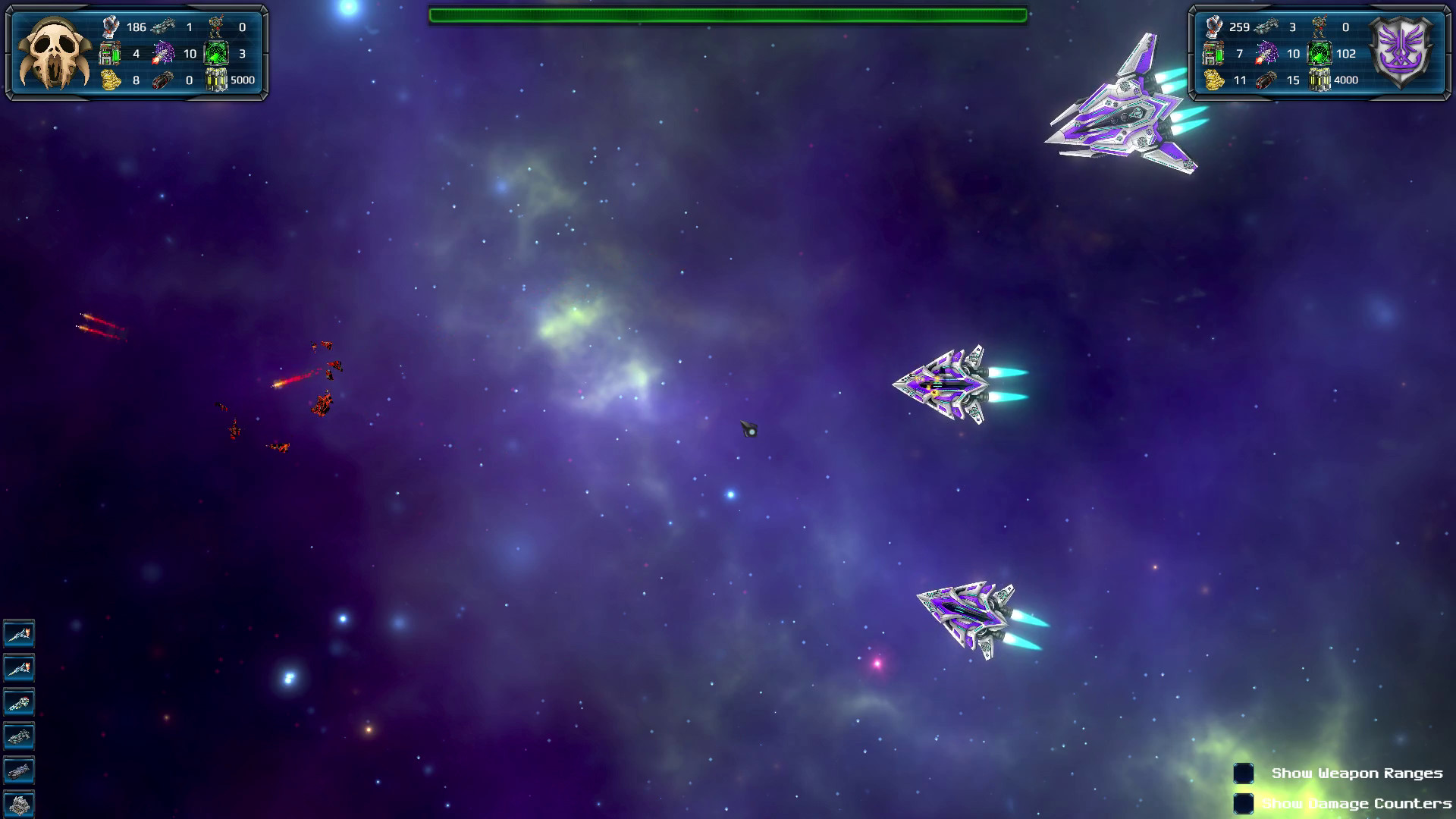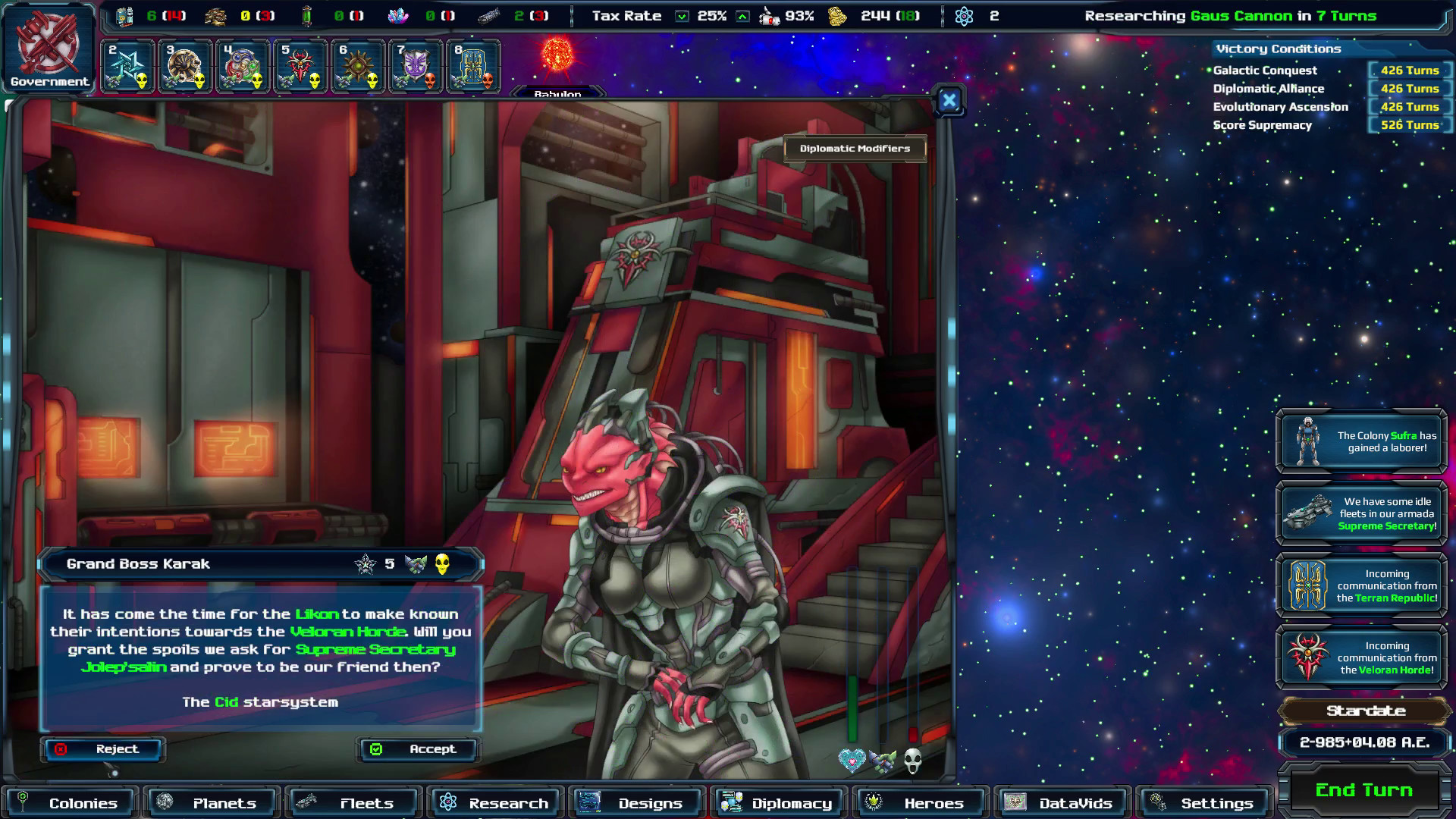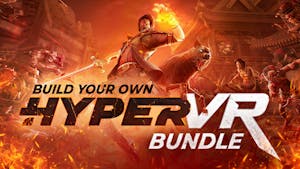Take the chance to lead humanity back home, while uncovering the mysteries behind the Exodus, across a choice driven narrative campaign the Campaign. Or challenge yourself in the Sandbox mode, by leading any of the various alien factions, to several possible victory conditions.
Features:
- Epic Story Campaign
Lead the Earth Legacy Task Force through 9 arduous missions, in their Campaign for discovering the lost heritage of Earth, and make decisions that alter the story and gameplay in significant ways; for which you can be rewarded with exclusive and diverse abilities only found in this mode.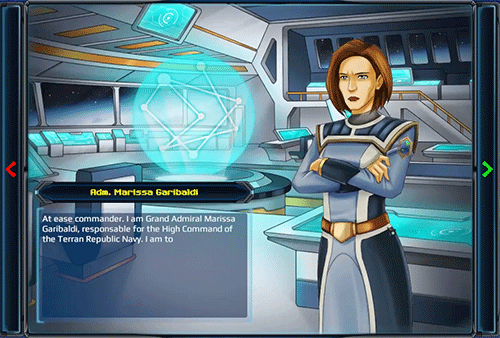
- Dynamic Sandbox Mode
Take charge of one out of 8 different main factions, or create your own in the Sandbox Mode, as you thrive to enslave, exterminate, seduce or right out beat all and any competition. Survive a host of events and menaces, that will surely challenge your empire and all others.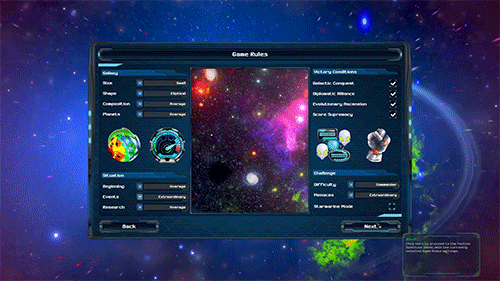
- Battle in Space and on the Ground
Fight in space and in the ground, with real time tactical space battles, where positioning and heading matters as much as weaponry. And initiative based top down ground battles, with hosts of infantry, armour, strike craft and even mechs. Or just nuke them from orbit, that works just as well.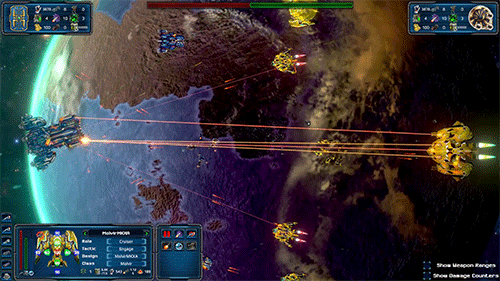
- Explore captivating Galaxies
Colonize or conquer a vibrantly diverse galaxy of your choosing, full of wonderful stars, planets, asteroid belts, etc, all inspired by true astronomical phenomena. Maneuver your ships around black holes and supernovas, to either use or avoid their effects, in your conquests.
- Semi-random Research Grid
Research over 300 technologies, in an exclusive and randomized tech grid, which forces you to choose wisely what you research and guarantees that no two games will be the same. React to events in the galaxy by researching about them and obtaining unique advantages over your enemies.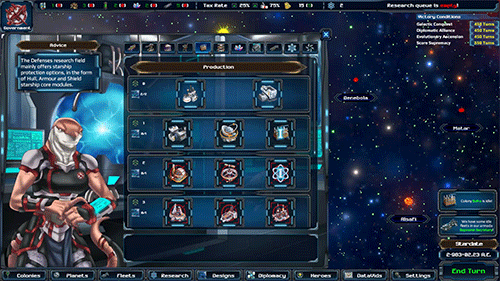
- Lead through amazing Heroes
Encounter and recruit amazing galactic heroes, to lead your fleets, govern your colonies or even spy on your enemies! Make havok without firing a single blast, by conducting Sabotage and Revolt, among other operations; deep behind enemy lines.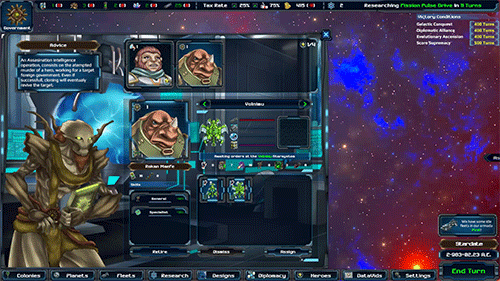
- Design your own Starships
Design you own starships, by deciding not only what weapons they carry and in which configuration, but also their Core and Support systems. Overwhelm your opponent with hosts of agile Frigates, swarms of Strike Craft or just with the immense firepower of a single huge Titan.
- Open files for modding
Tinker, change and customize the game to your heart's content. Adding new or modifying existing starships, factions, troops, technologies, etc to the game. Maybe reenacting then, some of your favourite scifi tv shows and movies moments, right in the game.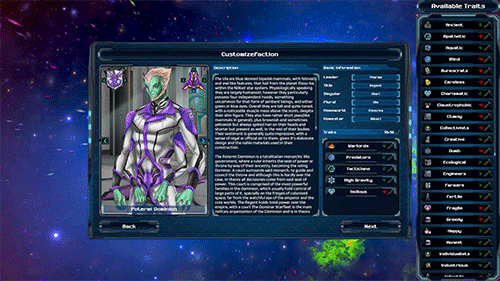
Hey everyone.
Fernando here again guys, first of all I hope you are all doing ok, with all that is going on. Stay safe! In any case, here I come with another entry of the Astra Exodus dev diaries. I thought since Ive received lots of requests for a more in depth modding guide and pretty much many of us are staying indoors, it was a good time to actually do it. Why not before? Because Ive been busy working on the next major update to the game, which we hope to reveal in a couple of weeks ;) you can expect news about it to come your way very very soon, so stay tuned! Anyway, onto modding now!
Where to start?
Well in the basic modding guide, which you can find here: https://steamcommunity.com/games/880750/announcements/detail/3452506664386446815
This guide will assume you have at least read through that one first, before proceeding with this one. You can also check out the manual, where you have more material on the subject. Finally it is always recommended to pick an already working mod to start from and use as a reference. For this you can use the Star Wars and/or Translation mods, which were created by me, but any will do of course.
Globals.lua
This file under the /Data/ directory contains all the games most important variables. Beyond the objects in the game, like factions, techs, etc, this file defines the overall rules; with which it must be governed. We will go over each section, which is denoted by a comment starting with --, to see what kind of variables each one has.

Debugging: Here you can toggle on/off logging and also the cheats. The log will be outputted to C:/Users/
Localization: In this section you can add more languages to the game by providing a localization RESX file. You can use one of the two provided under /Data/Localization as examples. Here all you have to is enter the two letter country code with which the localization file ends with. It must be a proper ISO3166 country code. Each coded string here will be referenced from the other data files of the game, such as techs, modules, etc to find the localized text to display. These are usually shown as ID, Name, Description and Stats. However stats is, in most cases, autogenerated by the game(special abilities are the only exception).
AI: For the AI you have two main parameters so far, one that adjusts how social it is, meaning how often it will seek others to trade, threaten, etc. And finally an aggressiveness setting that will regulate how often it is willing to pick up a fight.
Economy: There are many variables herer that affect the economy in the game. Probably the most importants are the required foo per population, the minimum materials efficiency factor(determines how fast you can construct stuff if you are out of minerals) and tax income per population. You also have the rate at which construction/industry is converted into Credits, Research and Population; as well as how much these projects cost.
Pollution, Corruption and Morale: This section is clearly named after the mechanics it rules over. Here the most important are the maximum pollution percentage, the minimum morale percentage and the maximum corruption percentage. Remember that morale affects minerals extraction, pollution affects construction/pop growth and corruption affects credits/research.
Start: Here you can adjust the base start date and the initial starting conditions for each era start. It is important to remember to not reference here any installation or troop, which wont be in the mod.
Galaxy: Here you can adjust the size factor to generate bigger galaxies, as well as the min and max distance between starts, to make them sparser. You can also adjust the min/max players per galaxy size allowed.
Victory Conditions: Most people here will want to adjust the number of turns required for enabling each victory condition. One thing to keep in mind though, are the extra values used in the calculation, one as a base starting value and the other as a multiplier per galaxy size (Tiny = 1, Huge = 5).
Planets: Planet specific values go here, including the max population modifier per size and how the Construction is impacted due to abnormal gravity in them. Also more importantly, here you define the base per labourer resource generation, for each planet type.
Starsystems: Just as you did with planets before, here you can adjust stuff for starsystems, such as the planets and peculiarity chance. You can also change here the label colour for unowned and custom factions.
Fleets: Here you change how fleets work, more precisely their detection and movement range. Plus of course their base speed.
Diplomacy: In the Diplomacy section you can change how much tribute is paid, the base credits exchange and the factor result for some treaties.
Heroes: There are tons of variables here to modify how heroes work, from how many as a base you can have, up to their starting salary(hiring cost). However the most important are probably how much experience they gain pero class and how many turns it takes them to to wait for you, be out of action and go from one place to another.
Battles: The main value you will probably want to adjust here is the maximum starships per battle. Not that this affects only capital ships, it doesnt affect strike craft. Other important values are related to the autoresolve randomization, the difference between the min and max damage here will determine how random they feel.
Starships: Within this section you will first have to set the ID for some of the base modules in the game, meaning the default Constructor, Colonizer and Engine modules. Then you can adjust the upkeep and core module cost modifier for all ship sizes.
Espionage: In this section you can adjust the base chance in percentage and duration turns of each of the espionaje missions in the game. Remember that these values will be added to the corresponding hero, when determining the success chance of a mission.
Ground Battles: Here you can adjust mainly the initiative delta time(how many seconds each initiative unit value take), the max troops per planet and the bonuses some installations provide in battles.
Menaces: Here you can provide a list of starship designs to be used as galactic menaces, when the game starts. Remember to make sure any specified designs here actually exist within the mods structure!
Ability/Trait IDs: Within this section you can specify the IDs you will use to represent specific abilities and traits which affect the game in a particular and significant way, which is not otherwise adjustable. An example is the Ancient trait, which fires an ability, showing the whole map at start; without giving away the other players start systems.
Starsystem names: Finally in this last part of the text file, you can specify the starsystem name which you want used in order to create the galaxy at game start. Make sure to have enough for whatever galaxy sizes you are going to allow. Using 250 should be enough, but it is not as varied as the default number of close to 500 names.
Factions and Traits

Besides the usual ID, Name and Description used for all other objects in the game, you will have to specify some other values for any custom made factions in your mod.
The values in the lore section are pretty self explanatory, just remember that these will be used in the games text when generating messages to the player, so make sure they make sense.
In the graphics section you can adjust the map color, which you can set from any online editor with RGBA values, and several relative graphic files. In this case an icon(flag or emblem), small portrait(faction pick), character graphics(500x680) and leader background(1024x768 for audiences).
Related to graphics but separated, since its worth its own section, you can find the starship set and visual keys. These are used to look up the ship graphics for this faction. Well talk more about these when we go over starship designs and classes.
You also need to specify a list of trait ids that belong to this faction. Traits are Abilities or Modifiers which affect how the game plays for the faction.

As you can see, traits are really simple, besides the obvious localization and icon, all you have to provide is its pick points worth, whether if it is positive, any trait id which it excludes(if this one is added to the faction, then this one cant be added as well, when customizing a faction) and finally the modifier or ability id.
Finally you need to define how the faction will behave when the AI is using it, this is done through the setting of an Agenda, Focus and Rival; plus its Preferences for Starships, Troops and Tactics. You can find a more in depth explanation of each of the possible values here within the AI Dev Diary, which you can find here: https://steamcommunity.com/games/880750/announcements/detail/1692724456740783658
Techs

Techs are filed under the /Data/Techs folder, each one of them can reference a Troop, Installation, Ability, Modifier and/or Module. This is done by an ID, which each tech must set, in order for the game to find what it unlocks.
To recap, you build installations and troops in your colonies. Modifiers are added to your empire, affecting everything you own. Abilities let you do things you couldnt to before. And finally modules are used to design starships, so you can then build them.
Besides that all you need to establish is to what category it belongs to, what level and its research cost.
Installations

Installations are relatively simple, besides the obvious localization and icon stuff, all you need is to set a classification, a generated or added modifier, a cost and finally how much upkeep it will cost. An installations classification can be: Defense, Construction, Credits, Food, Metals, Research, Industry, Morale, Organics, Rares, Corruption, Population and Special.
The effects of an installation can either be to increase the per colonist ([u]GeneratesModifier[/u]) output of a resource or to simply add a fixed amount ([u]GeneratesAdditionally[/u]) of said resource automatically to the colonys totals. For a value of [u]GeneratesModifier[/u], you will usually have Percentage added to the resource name, as it is the case for the example given. In the case of a [u]GeneratesAdditionally[/u] value, you only need to put the resource name and the given amount. You can check all the examples on this, under the /Data/Installations game folder.
Starship Designs and Classes

A starship design file is the representation of a design, which you can actually make in game. However some designs are needed before the player starts, these are the ones used as default and those used as menaces.
A design then consists of a Class reference, a combat tactic, the core/support module ids it has installed and finally a list of weapon mounts (with grade). Each weapon mount can then have a weapon installed or not, like in the screenshot above. Additionally an IsDefault flag is set, for those designs reserved for the start of the game. For more information on the designs themselves, weapon mounts, grade etc you can refer to this dev diary: Z.
The most important part of a design however is a concept that is barely seend within the game, which is the configuration of the class it represents. For that we have another file, referenced by the StarshipClassID value, where that is setup.

A starship class, like the one shown in the previous image, will most importantly have besides a unique ID; a StarshipSetKey which is used in the Graphics section to find the corresponding graphics for the class in the following form:
/Graphics/Starships/
The VisualVariationKey helps the player customize the ships to his or her liking, by changing their color scheme in the appropriate screen. Regarding the sprite sizes, you can follow the table below, to make sure any custom starship graphics are correctly set up for the game. Just in case all sprites are YxY, meaning they are squared.

The physics section is to help with hit detection when the sprites has issues that prevent the automatic collider generation from generating a closed optimized 2D shape. They only to be changed in this case, otherwise they can be left out.
After that you have the Thrusters and Weapons sections, the most important part here is the position they are going to take, from within the center of the sprite. In order to find the exact position you can open the Unity3D game engine, create a sprite renderer object and assign the image of your ships. The create an empty gameobject as the child of the ship, moving that object across the sprite will net you the coordinates you need, to fill out the position for the class engines and weapon ports. Finally on weapon ports, you need to specify an ID, which I encourage to be as follows: Turret/Fixed + Micro/Light/Main/Heavy/Massive + a number.
The decals used are the same across ship roles, so just copy the decals info for your ship, according to the role/size it has. Finally the same position logic as with thrusters/weapons, must be done with the Faction Logo, however here one must also specify the scale it is going to take. You also need to specify whether it will be copied in symmetry or not, along the Y axis of the ship(to the sides).
Starship Modules

As we saw in the Starship Designs dev diary here Z, there are three base categories of starship modules: Core (defenses and engines), Support (power, ordnance, etc) and Weapons. In turn, each category has many types, however since these have already been covered in said dev diary and the manual; we are not going to go in depth in each one of them.
To create a new or modify an existing module, you need to specify, besides the basic localization and icon stuff, the classification info. This includes the category, type and PrefabID (only for shields and engines). For a prefab id, you can use the ones already in the game, to represent your module for now. In the case of Weapons, you will also have to specify what mount grades it can be equipped into and what type of weapon it is (Mass, Particle, Beam or Missile).

After the classification section, you will have to set the proper stats of the module, which will vary greatly with the type of module you want to create. I again recommend that you pick one from another mod or from the game itself as an example to follow. Most modules however will consume power, so the PowerRequired stats will be there. For weapons of course, you will have the Damage, Range, RateOfFire, etc as usual. In the case of support modules, you will also have to specify the amount of space it will take in the spaceship and whether more than once can be equipped(by default this is true).

Finally all that is left to set is the production and upkeep cost for the module, this will of course reflect on the ship that uses these modules, as in turn said ship Production/Upkeep cost will be an aggregate of the modules it carries. In the case of core modules, since they are different according to role/size, that cost will be modified accordingly. The same thing happens with weapons and the mount grade where they are equipped, meaning a Micro weapon will cost less than a Heavy one.
Troops

Troops are simple enough to modify, besides the base localization and icon, you need to start first by assigning a Classification (Infantry, Armor, Mech or Airborne) and Domain (Ground or Amphibious). Then you need to specify a sound group ID, you can reuse one of the ones created for the game, assign the stats for the troop. Including finally its production and upkeep cost.
Peculiarities

Peculiarities are easy enough to set up, all you need to do, besides the basic localization and icon stuff; is specify what they generate (just like with installations), to what planet classes/sizes they are restricted to and whether if they can only appear on alive (Food > 0) planets.
Heroes and Skills

Heroes are perhaps the easiest entity to set up in the game, all you need besides the localization and icon (portrait in this case), is the list of skill ids which the Hero is going to have access to. The added upkeep cost of these traits will then become both the upkeep and hiring cost you will have to pay to enjoy his or her services in game.

In turns skills are a little bit harder, you need to set up the increment per level, meaning how much the modifier goes up when levelling the skill. Whether or not the increment is Additive (for example the Navigator traits gets an Additive +1 to range) or a Percentage (for example the General traits gets an additional 10% experience bonus). Then finally the ID of the modifier to be applied and of course the upkeep cost of the trait.
Minimum Setup
- OS: Ubuntu 12.04 (64-bit)
- Processor: 2.5 Ghz Intel Core 2 Quad Q8300 or equivalent
- Graphics: 1 GB nVidia Geforce GT460 or equivalent. 500 MB ATI HD4850 or equivalent
- Storage: 4 GB available spaceAdditional Notes: Minimum Resolution: 1366 x 768
Recommended Setup
- OS: Ubuntu 14.04 (64-bit)
- Processor: 3.5 Ghz Intel Core i5 or equivalentMemory: 8 GB RAM
- Graphics: 1 GB nVidia Geforce GTX660 or equivalent. 1 GB ATI HD7850 or equivalent
- Storage: 4 GB available spaceAdditional Notes: Minimum Resolution: 1366 x 768
[ 6493 ]
[ 2221 ]
[ 1907 ]

